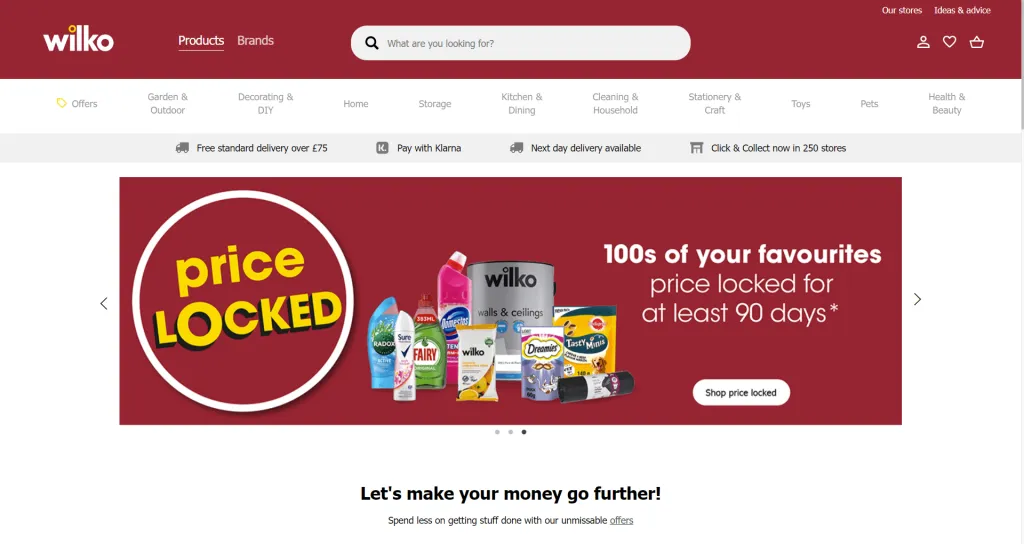Overview
The project involved conducting comprehensive testing of Wilko’s e-commerce website. The objective was to ensure a flawless user experience, optimize performance and address challenges such as changing requirements and limited testing time. Strategies were implemented, including clear communication, prioritization, optimization of the testing process, appropriate A/B testing techniques, and thorough testing of critical e-commerce processes. Continuous improvement was emphasized throughout the project. The goal was to deliver a bug-free website and enhance Wilko’s online success, which has been successfully achieved.
Challenges
- The scope of what needs to be tested may be unclear or constantly changing, making it difficult for the team to understand and prioritize their testing efforts effectively.
- The limited timeframe for testing may result in insufficient time to fully test all areas of the website, potentially leading to missed bugs or other issues.
- The testing process needs to be efficient and accurate to ensure that the website is fully functional and bug-free, potentially focusing only on the changes that need to be tested, and potentially overlooking other areas of the website that may have been affected.
- The load balancer used in A/B testing may make it difficult to test specific variations, potentially affecting the accuracy of the results.
- Determining the appropriate sample size and duration for A/B testing can be challenging, as tests that run for too short a period may not capture enough data to detect meaningful differences, while tests that run for too long may delay the implementation of changes.
- Confounding variables such as seasonality or marketing campaigns may impact user behaviour and affect the results of A/B testing.
- Testing of critical e-commerce processes such as add-to-cart and checkout must be thorough to ensure a seamless user experience and avoid any business impact.

Solutions & Strategy
- Clarify the scope of testing: To overcome the challenge of unclear or constantly changing testing requirements, it is important to establish clear communication with the client and project stakeholders. This may involve setting up regular meetings to discuss updates and changes to the website, and ensuring that testing requirements are well-documented and shared with the team in a timely manner.
- Prioritize testing efforts: With limited time for testing, it is crucial to prioritize testing efforts based on the areas of the website that are most critical to the user experience and business success. This may involve using risk-based testing techniques to identify and focus on high-priority areas and establishing clear testing objectives and criteria.
- Optimize the testing process: To ensure that testing is efficient and accurate, it is important to use tools and techniques that can help automate and streamline the testing process. This may involve using test automation frameworks, exploratory testing techniques, and risk-based testing approaches to ensure that testing is thorough and effective.
- Use appropriate A/B testing techniques: To ensure that A/B testing results are accurate and reliable, it is important to use appropriate sample sizes and durations, and to control for confounding variables such as seasonality or marketing campaigns. This may involve using statistical analysis techniques to validate the results of A/B testing, and ensuring that testing is conducted in a controlled and consistent manner.
- Test critical e-commerce processes: To avoid any business impact, it is crucial to thoroughly test critical e-commerce processes such as add to cart and checkout. This may involve using real-time monitoring and analytics tools to identify and address any issues that arise during testing, and ensuring that testing is conducted in a secure and controlled environment.
- Continuously improve the testing process: To ensure ongoing success and effectiveness, it is important to continuously evaluate and improve the testing process. This may involve collecting and analysing testing data, identifying areas for improvement, and implementing changes to optimize the testing process and ensure that it remains effective and efficient over time.

Conclusion
In conclusion, testing an e-commerce website like Wilko can present several challenges, including unclear or constantly changing testing requirements, limited time for testing, and the need to optimize the testing process to ensure accuracy and efficiency. It is important to establish clear communication with the client and prioritize testing efforts based on the areas of the website that are most critical to the user experience and business success. Appropriate A/B testing techniques, such as controlling for confounding variables and using statistical analysis, can ensure that testing results are reliable and accurate. Thorough testing of critical e-commerce processes, such as add to cart and checkout, is crucial to avoid any business impact. Finally, continuously evaluating and improving the testing process can ensure ongoing success and effectiveness over time.


